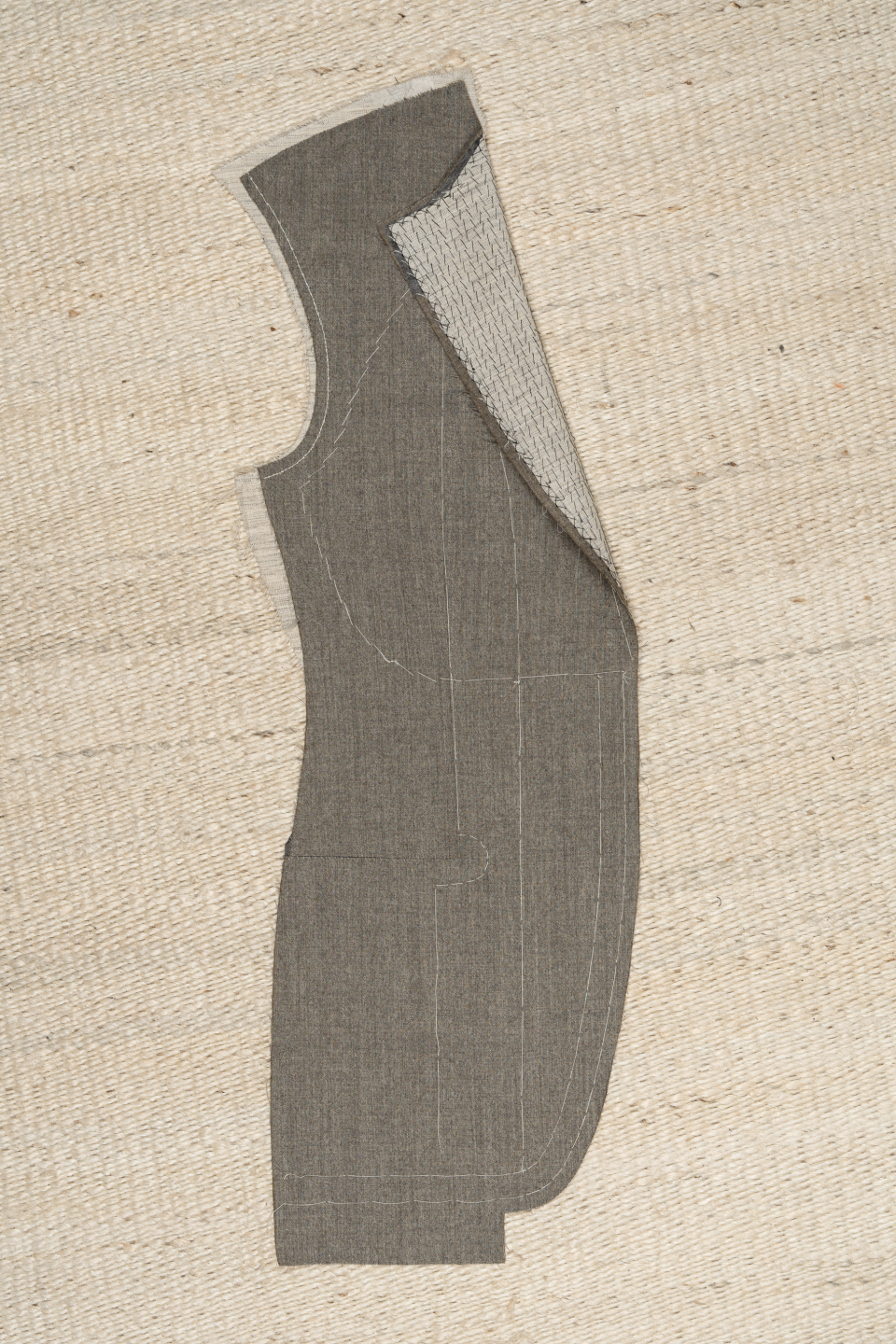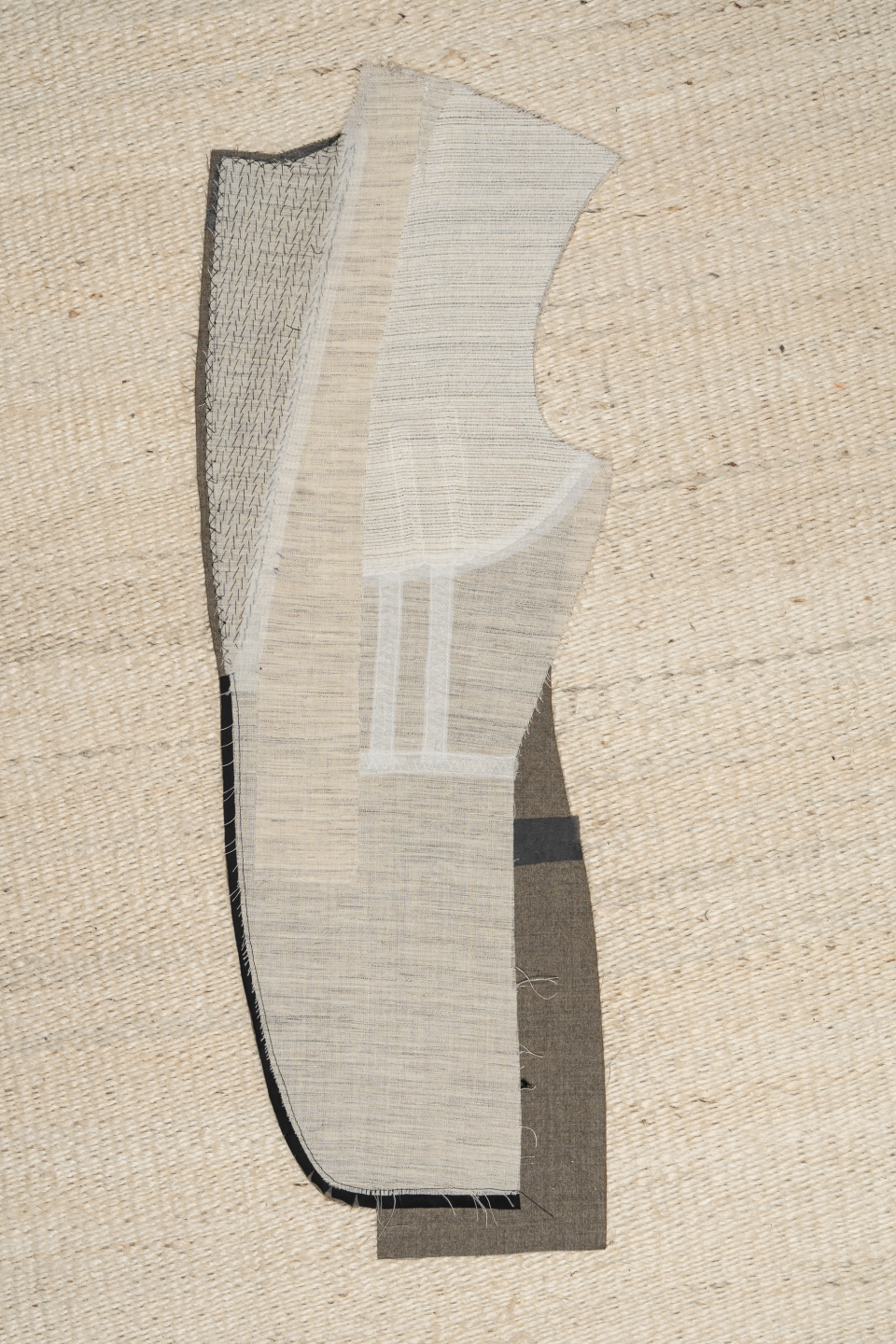The Biggest Difference Between Cheap and Expensive Suits, According to Expert Tailors

Shopping for a suit can feel like learning an entirely new language. You go in looking for a simple two-piece, and you wind up trying to decipher what “half-canvassed” means and wondering whether your jacket should have one vent or two. To help you navigate the ins and outs of the tailoring world, we’ll be exploring each individual aspect of a suit—from the fit to fabric to the pockets—with a little help from the most stylish experts in the sartorial space. Welcome to GQ’s Tailoring 101.
“You get what you pay for” is a foundational tenet of consumerist capitalism, but it’s nonetheless a lesson we all have to learn the hard way from time to time. Like the off-brand Theragun you bought on Prime Day, a too-cheap suit is also destined to end up in the trash, but only the suit has the potential to make you look bad. Possibly in front of a lot of people.
It's all about nailing the rise.
Worsted wool or flannel? Super 110s or Super 180s? We polled some of the world’s most knowledgeable fabric nerds for answers.
This doesn’t mean you need to spend the price of a gently used family sedan to get a well-made, good-looking suit, but it does mean that the price you pay will almost certainly reflect the quality of its constituent parts and labor. Whether or not you care about the skill involved in creating a fully-canvassed jacket that hugs your chest in just the right way or the pains taken to weave the cloth out of the finest Australian merino wool, the difference these things make will be evident in how good your suit looks and how long it lasts.
“When you build a building, it's only as good as its foundations, and a handmade garment is only as good as what’s on the inside,” explains Leonard Logsdail, an NYC tailor with five decades of experience crafting bespoke suits. “It’s in the way the tailor shapes the canvas and the hand stitching that shapes the lapel and shapes the chest. This secret is in the work that goes inside the coat that cannot be seen, and it’s what separates a good suit from a great suit.”
Regardless of where your suit is made and how much you’re paying for it, one of the most important indicators of baked-in quality is whether a jacket is fully-canvassed, half-canvassed or fused. Canvassing is the invisible layer of fabric built into the front of a suit that gives the lapels their all-important roll, and lends the chest of your suit its structure and crispness.
A fully-canvassed jacket is the gold standard, and is usually made with a layer of cotton, felt or horsehair (if you’re truly old-school) that’s been carefully stitched in place from the shoulder through the lapel to the bottom of the jacket. Also called a “floating” canvas, this invisible piece gives volume to your lapels, helps your jacket to move with you and will mold to the shape of your body over time. Cheap suits, by contrast, glue (or fuse) this layer in place, which saves time and materials, but often results in a set of flat, lifeless lapels that will eventually pucker, bubble, curl outwards and generally look shabbier the more you wear it.


“A fused canvas is stiffer, less fluid and less breathable,” explains Buzz Tang, co-founder of Hong Kong-based menswear label The Anthology. “Even if it’s a high-breathability cloth, it just won’t ventilate as nicely. It gets the job done at a lower price point, and it’s more accessible, but if we were to recommend something the full-canvas option is the best.”
Between these two is the half-canvassed jacket, a best-of-both worlds solution that uses a combination of canvassing and fusing to create something with better looks and longevity than a fully-fused jacket at a more affordable price than a fully-canvassed one. “It’s superior to glued canvas, and it gives better shape, breathability and drape to the garment,” adds Tang.
It’s not easy to know what’s going on inside your jacket without actually ripping it open, but there are other more visible elements like “pick stitching,” the slightly raised stitches sometimes found around the edge of the lapels and pockets, that can speak to its quality. Because pick stitching is also sometimes added to make a cheap suit look more expensive, Tang suggests also looking for a handmade lapel buttonhole, also called a Milanese buttonhole or an asola lucida, which is identifiable by its signature raised profile and a glossy thread called a “gimp”.
While handmade buttonholes can also be faked by unscrupulous tailors, a true asola lucida is one of those details that will earn you an appreciative nod from anyone who knows a three-roll-two from a 2x1. “Lapel buttonholes are something that make an impression. It’s probably the first thing that strikes people first rather than the more nuanced things like the collar and lapel proportions, the shoulder line, the shoulder style,” Tang says. “I think it’s a signifier of a good quality jacket,” he adds. “The buttonhole is an interesting detail that a lot of people would pay heed to.”
Originally Appeared on GQ
More Great Style Stories From GQ
59 Dos and Don’ts for Getting Dressed Right Now
Rolex’s Biggest Release of 2024 Is…
The 20 Greatest Nike Air Max Sneaker Colorways of All Time
Not a subscriber? Join GQ to receive full access to GQ.com.
Every Single MoonSwatch, Ranked



